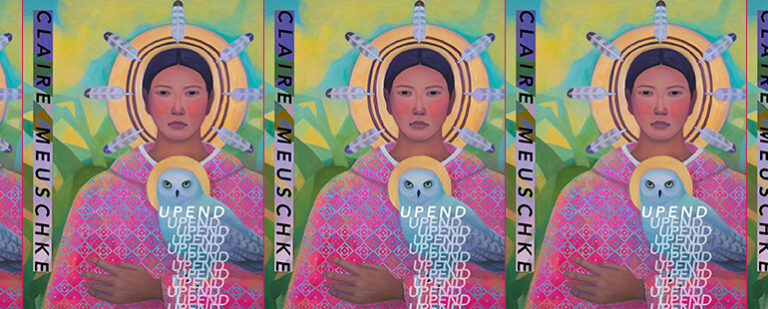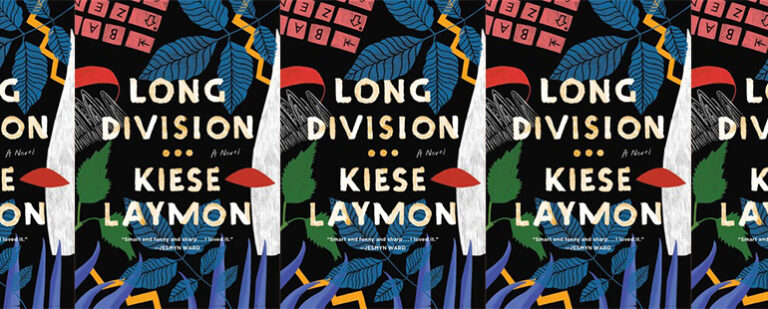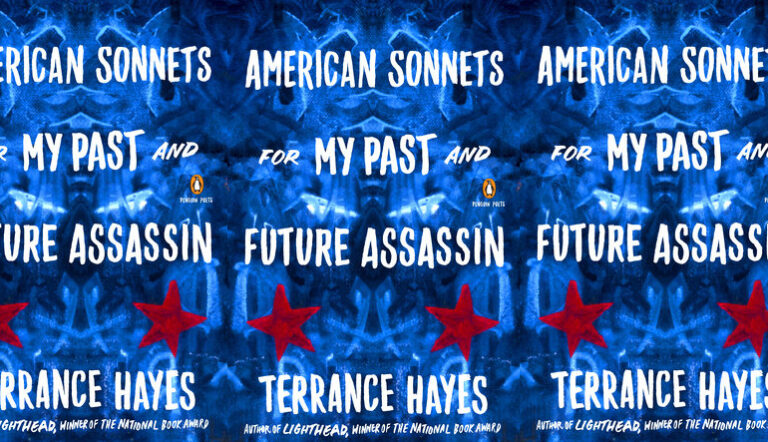The Feminism of Women’s Zen Buddhist Memoirs
If you’re an American interested in studying Buddhism, you usually begin at the bookstore. Most shops have entire sections these days dedicated to the exploration of Buddhism in the West, offering mystery and uplift, a promise of the exotic and the inspirational. The books within tell similar stories of crisis and doubt and the search for something approaching peace in a troubled world, and they use the alluring images of a Zen garden, or an intricate sand mandala, to draw us in with another culture’s vision of beauty. As an avid reader and student of Buddhism, I absorbed Zen Seeds, Memoir of a Tibetan Lama, Cave in the Snow, and Sorrow Mountain; Turning the Wheel and Original Dwelling Place, among others. The stories within these books are always personal and relatable, a window into the life of someone who wondered and worried in ways that I had wondered and worried.
Buddhist biography, a genre all by itself, is often a hybrid of self-help and memoir, and part of a long literary tradition of personal narrative and hagiography. The biographies of saints track their paths from sin to enlightenment, serving as a source of inspiration for readers. While St. Augustine, for example, was praying, “Lord, grant me chastity, but not yet,” the Tibetan saint Milarepa was living a wild life of excess and even murder before he encountered a teacher and became a monk. Medieval monks wrote their stories of leaving home in the quest to actualize deep spiritual truths. In hagiographies across cultures, these stories of sinful youth and tortured moments of doubt and self-loathing, however, always give way to wise maturity.
Though contemporary Buddhist memoirs follow this same arc, these stories of suffering and labor, questioning and doubt, awakening and revelation, are predominantly the stories of women.
As I’ve read more Buddhist biographies and memoirs, I’ve begun to notice how women seeking spiritual meaning have been forced to endure the added burden of their gender. In Himalayan Hermitess, the memoir of an eighteenth-century Tibetan nun, Orgyan Chokyi, translated by Kurtis Schaeffer, for example, Chokyi begins her story in a state of mourning: born a girl, she is already a burden and a disappointment to her parents. She blends prose and poetry, singing, “…they were hoping for a boy, but a girl came. Mother was depressed. They gave me the name Kyilo, ‘Happiness Dashed’…’Look at this girl! The shame and depression are unbearable’ [said mother].” Like other Buddhist memoirs, Chokyi draws attention to the inherent suffering of her birth—the cycle of rebirth is an occasion for mourning, as it brings more attachment, more worldly desire, more pain—but for women, with their emotional weakness, their motherly attachments, and their inferior insights, enlightenment is seen as a nearly impossible goal. Chokyi writes:
“When I ponder our female bodies / I am sorrowful; impermanence rings clear. / When men and women couple—creating more life—/ Happiness is rare, but suffering is felt for a long time. / May I not be born again in a female body. / May the mare not be born as a mare…May I be born in a body that will sustain the precepts. / When acts of desire are committed, suffering must follow.”
Unlike other Buddhist writers, however, Chokyi is resistant to the feminine role traditional Buddhism has cast for her. She resists being put into the kitchen as a servant of monks, and even argues with her guru; the writing of her autobiography itself is an act of disobedience. Buddhism traditionally has little space for women—many Buddhist sects argue that women are not capable of the insight required to achieve enlightenment, and are better off waiting for another lifetime in which they are reborn as men—but Chokyi stubbornly persists in her studies.
In her writing, too, she works to find a place for herself, using the traditional form of hagiography to carve space for women in a tradition that has pushed them aside. In her mournful verses is a subtle argument that women may be uniquely capable of enlightenment, because of the suffering that has already been visited upon them in their lives. You don’t need to tell a mother who has lost a child about the inevitability of death, and its accompanying pain; she knows already. You don’t need to tell a woman that people will cling and grasp, that something called love can suffocate and even kill. You don’t need to tell a woman that people will not treat you as fully human, that men with power will look through you as though you aren’t really there—that maybe you aren’t; maybe you don’t exist, if no one sees you.
The obstacles women encounter on their spiritual quests are newly relevant as a result of the rise of the #MeToo movement, which has touched the Buddhist community. More and more women are coming forward to expose teachers for taking advantage of them sexually; their bodies are still seen as someone else’s possession. Cave in the Snow: Tenzin Palmo’s Quest for Enlightenment by Vicki Mackenzie, a biography of a British woman who became a Tibetan nun called Tenzin Palmo, includes a passage in which Palmo speaks frankly about how her male teachers would pay her unwanted attention, harass her, and assault her. She recounts the story of the respected Tibetan teacher who tries to reach his hand up her skirt. She swats him away, cheerfully enough; it’s a different time, when women who want to advance spiritually have to put up with all sorts of casual misogyny. It’s widely known that this teacher harasses his female students, yet he is no less respected for this knowledge. In the lectures Palmo attends, the only woman surrounded by a sea of male monks, she’s taught that women’s bodies are the seat of desire, the source of the problem of attachment and suffering. She can’t help but laugh. As I read this memoir, though, I wonder at the cost of that laugh, at all the compromises, large and small, women have made in their striving for peace. Ultimately, Palmo makes the solemn vow to do the unheard of thing: to achieve enlightenment in a female body.
The scandals that have been revealed in the community and beyond thanks to the #MeToo movement are striking in their similarities. Powerful men had something to offer or to withhold from women, and they took what they wanted as payment. Men used the veil of the workplace, dangling advancement, or the threat of a lost job, in front of women, to coerce and intimidate and harass. The women in those boardrooms and private offices and hotels were and continue to be vulnerable. There are other rooms in our lives where we are even more vulnerable, however: the spiritual sphere. Recent accusations of groping, assault, and harassment committed by both Zen and Tibetan teachers, including Sakyong Mipham Rinpoche, the leader of the largest Buddhist organization in the West, and Eido Shimano, founder of one of the largest and most influential American Zen organizations, have shown that this space is just as vulnerable to abuse and corruption as other places once thought safe in our society: A boardroom. An office. A restaurant. A church.
There’s no easy way to categorize the kind of trauma that results from spiritual abuse, whether it takes place in a Catholic church or in a Zen temple. In the case of the Catholic church, children were the targets of predators who deliberately sought out the vulnerable in their communities. The abuses that have occurred in Buddhist organizations exist in a more nebulous moral space, where adults often, by some definitions, consented to sexual attention. But the use of power and spiritual authority to obtain compliance is chillingly similar. In both traditions, survivors of abuse have said that to refuse their priest or their teacher would be like refusing God.
In his book The Zen Predator of the Upper East Side, investigative journalist Mark Oppenheimer chronicles the career and the abuses of Shimano, a Japanese monk who arrived in the US in 1964 and became an overnight spiritual celebrity among the well-heeled and spiritually curious of Manhattan. Wealthy patrons such as the widow of the founder of Xerox donated money to his Zendo and counted themselves as students. After decades of hushed complaints, however, Shimano’s organization has finally acknowledged that in the course of a nearly seventy-year teaching career, he slept with dozens of female students, many of whom reported feeling exploited and manipulated. It took many female voices raised, and one student standing in the middle of a prayer session to accuse him openly, before anyone paid any attention.
Similarly, the Sakyong (an honorific) of Shambhala Buddhism, a Tibetan sect, has now been accused of repeatedly groping and sexually assaulting his female students. He is a revered figure in his sect, his wisdom unquestioned and his power over followers absolute.
Shimano and the Sakyong are not outliers. Similar scandals have broken in all the major Zen centers around the country, from upstate New York to San Francisco. The highly respected co-founder of Naropa University, Chӧgyam Trungpa Rinpoche, was widely known for having sexual relationships with students. This was known by 1982, yet the Rinpoche was not censured. There have been widely varying acknowledgments, apologies, or actions taken. Some survivors are still waiting for justice.
So what do you do, when the Master that you’ve poured your heart out to asks for sex, or demands it? Do you walk away from your faith? In a religion free of sin, and lacking the judgment of a wrathful God, it can be difficult to pin down victims, villains, and what sort of justice is needed. Many of the accused teachers claim that such activity does not violate Buddhist precepts. The old Judeo-Christian concepts of chastity, lust, and shame do not apply so easily to situations where teachers and students are navigating an experimental spiritual space.
Thanks to the women who have come forward, though, we have a growing understanding of what it might feel like to be female and alone in a room with a powerful man, hoping for some kind of grace.
To their credit, Zendos and Tibetan centers have begun to act. Teachers such as Shimano have been ousted from the centers they founded, denied pensions, and removed from governing boards. More and more female teachers are leading Zendos and temples. Buddhist women have discovered that a female teaching lineage also exists.
In the essay collection Turning the Wheel: American Women Creating the New Buddhism, for example, Sandy Boucher writes of attending the first Women in Buddhism conference in 1981, founded by Judith Simmer-Brown. She writes, “The tempering of feminist thought and methods through the practice of meditation, the opening up of Buddhism to the experience and contribution of women, the finding within Buddhism itself of the ancient female sources, the examination of women’s experience in their Buddhist groups, the delineation of problems: all this concerned the participants.” The women who attended the conference aired their grievances about sexual harassment; they also began the work of building a female Buddhist community in the West, reviving old Buddhist texts and re-discovering the stories of Buddhist women long lost in out-of-print books and untranslated poems and songs. They carried the goals of feminism with them into their spiritual practice.
As Susan Murcott, a Buddhist teacher and translator of ancient Buddhist women’s poetry, says, a feminist Buddhism will need to draw its authority from both Eastern and Western sources: “The culture that supports the whole feminist issue has its roots in Western democratic liberation movements, and so that’s the lineage! So, know that lineage. Know who the nineteenth-century feminists were, and know who Mary Wollstonecraft was…because that’s our intellectual heritage. If we’re going to integrate it with Buddhism, it’s also our spiritual heritage.”
Women have been practicing and teaching since the time of the Buddha, and their oral histories, poems, and songs are being revived. The stories of Buddhist nuns, with all their tragedy and pain, are stories of triumph too. Now readers can pick up Zen Seeds, the short, haiku-like reflections of a Buddhist nun; they can read Sorrow Mountain, the harrowing biography of a Tibetan nun who endured torture, imprisonment, and rape during the Chinese Cultural Revolution, but survived and endured thanks to her Buddhist practice.
Karen Gray, a prominent Buddhist scholar, asks in her essay collected in Turning the Wheel: “What is going to be born here in America in terms of Buddhism?” She answers:”I think what’s going to be born that’s really new will be born among women. Because for men the pattern is all there: the structures and the roots of climbing and gaining knowledge and gaining authority and all of those things, they have them all. Their full spiritual development already has a process laid out for it. Ours does not.” The frontier of Buddhist women’s literature is still uncharted; the genre is finding its tropes and themes. American women who become students of Buddhism are discovering that there is no fixed path for their ascension and too few stories and analogies that speak to their experience in a female body, enduring female pain, and female impermanence. They’re writing those experiences for other women to follow.
It’s an exciting thing, to read a story form that is still cooling and solidifying. It’s hot and molten right now, angry and transcendent, doubtful, radiating with dukkha (the pain of our impermanence) and with kensho (lightning bolts of insight about the true nature of reality). Buddhist women are developing their own genre of hagiography. It’s a story that is more humble, less assured, more fraught in its journey, but also more deeply connected to the ways that women encounter pain and voicelessness in their own lives.


